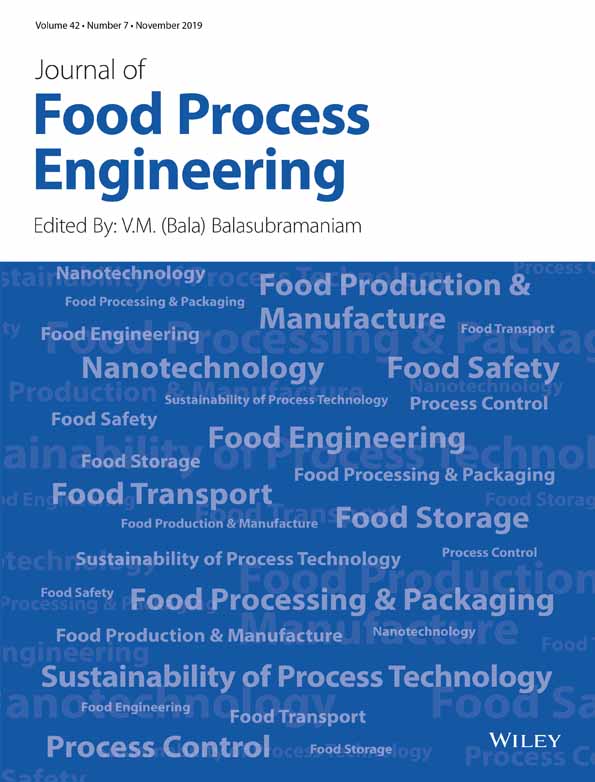Detection of adulterants and authenticity discrimination for coarse grain flours using NIR hyperspectral imaging
Funding information: China Scholarship Council, Grant/Award Number: 201709135004; National Natural Science Foundation of China, Grant/Award Numbers: 31671632, 31701325
Abstract
Near-infrared (NIR) hyperspectral imaging combined with multivariate analyses were used to execute adulterants detection and authenticity discrimination for coarse grain flours including millet, corn, and soybean. Spectral data in the range of 865–1,711 nm were first extracted and preprocessed from a total of 1,080 samples of six categories of pure and adulterated flours. Principal component analysis was employed to generate scores scatter plots for differentiating specific grouping of samples. Successive projection algorithm (SPA) and competitive adaptive reweighted sampling (CARS) were adopted to select the effective wavelengths. Then identification models were developed by partial least squares discriminant analysis (PLS-DA) using effective wavelengths and full spectra (FS) as inputs, respectively. The results indicated all of models provided the satisfactory identification rate, over 94.8% for adulterated flours, and even achieved 100% for pure flours. Considering computational cost reduction and model simplification, PLS-DA-CARS and PLS-DA-SPA models were more effective in practice within an acceptable range in comparison with PLS-DA-FS model. Especially, PLS-DA-SPA model could achieve higher identification accuracy than PLS-DA-CARS model. It can be concluded that NIR hyperspectral imaging technology as a noncontact and quick analytical method has promising application prospects for quality control of flour products.
Practical Applications
Coarse grain flours and its products are more popular with people in recent years because they contain abundant vitamins, dietary fiber, microelements, and other nutrients. Driven by huge profits, some coarse grain flours such as millet, corn, and soybean are often sold in term of adulterated flours, which not only disrupts market order, but also results in quality degradation and great economic losses. As a noncontact and quick analytical technology, NIR hyperspectral imaging was used for detecting the adulteration of coarse grain flours to eliminate fraudulent or unfair practices. Multivariate analysis methods were employed to speed the detection process and improve operation efficiency. The results indicated that NIR hyperspectral imaging technology was feasible and effective in discriminating the authenticity of coarse grain flours, laying a foundation for designing a portable inspection device with the optical filters.
CONFLICT OF INTEREST
The authors declare that there is no conflict of interests regarding the publication of this study.




